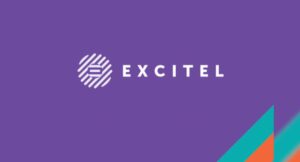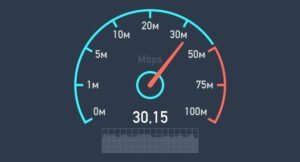Rapid improvements in connectivity, the rise of advanced technologies, and shifting consumer preferences have all converged to change the way that audiences view programmes. Media and entertainment is an industry in constant flux, one where traditional television and digital streaming are increasingly intertwined, and where technical innovation and economic strategy are critical to success.
From science project to the mainstream
In the early days of streaming, delivering video over the internet was more an experiment than a commercial endeavour. Narayanan Rajan, CEO of Media Excel, recalls: “Our history is really anchored in the belief that we were going to eventually evolve to a streaming world where video was going to be available on every device that could play video,” he says. “It started very much as a science experiment, contingent on having enough bandwidth to reliably play video over the internet and not have a horrible kind of buffering experience.”
He points to the dramatic improvement in global connectivity as key to the growth of OTT. “The average available bandwidth globally has made a jump between last year and this year, from 17-18% to almost 1,995 megabits per second, which is staggering.”
These advances have enabled OTT platforms to deliver high-definition, lag-free streams at scale and have set the stage for explosive market growth. Today’s industry, valued between $250 and $300 billion, is projected to expand dramatically, potentially reaching a $2–3 trillion market over the next 20 to 25 years as technological barriers continue to recede.
Shifting business models: Collaboration and managed solutions
As the OTT landscape matured, the initial rush by content providers to build proprietary streaming platforms gave way to a more pragmatic, collaborative approach. Olivier Braun, Head of Streaming at Red Bee Media, reflects on that evolution, “Back then, everybody wanted to launch their own OTT platform, and it was all about moving from linear, traditional broadcast TV to streaming,” he says. “The reality is that 10 years later, broadcast TV is still there, and not everybody is ready to use those streaming services.”
Paul O’Donovan, Head of Market Development at MediaKind, highlighted the challenges faced by first-generation streaming platforms, particularly when trying to scale from hundreds of thousands to millions of subscribers. “A lot of customers come to us and say, ‘oh, you know, we’ve got this service. It’s okay, but we don’t know how to scale it further. How do we go from 250,000 subs to a million? How do I get to two million subs? How do I get to five million subs?’”
He points out that as expectations for reliability and scalability have increased, companies are shifting to managed solutions and that this shift has allowed companies to reduce overhead, accelerate innovation, and respond more quickly to market changes, paving the way for a more integrated and consumer-focused media ecosystem.
Scott Alexander, General Manager, ViewNexa by Bitcentral, provides another perspective, comparing managed OTT services to content management systems in the publishing industry. “It does not make sense for 40 companies to all build a Netflix interface and maintain it across 11 different operating systems written in nine different computer languages,” he says. “It’s a lot of work. If we’re able to update a code base, and we work with 150 media companies, we do one update, and it applies to 150 companies. That’s more efficient than 150 companies hiring engineers to make those updates 150 different ways and 150 different times.”
Bridging traditional and digital media: The rise of FAST
One of the most significant shifts in the industry is the merging of traditional television with digital streaming in the form of FAST (free ad-supported television). While early forecasts predicted the demise of linear TV, reality has proven more complex.
Rajan explains how early FAST pioneers like Pluto TV initially focused on short-form content but found that long-form content was necessary for sustained engagement. “I think they started with probably 20 or 30 channels with a bunch of short-form content before they moved to longer-form content, because they realised that the level of engagement they were getting from viewers onto their FAST channels with short-form content was not where they wanted it to be.”
Rick Young, SVP of Global Products at LTN Global, noted that while FAST was initially seen as unsuitable for live content due to cost constraints, this perception has changed. “Five years ago, nobody would have said FAST would have any live content because it’s expensive and just ad-supported,” he explains. “But now it’s for real. The most popular channels are news, because you can tune in whenever you want and get fresh content, and there’s still lots of appetite for cooking shows, but live news and sports are major drivers of viewership.”
Blair Harrison, CEO of Frequency provides a unique perspective, arguing that FAST as a distinct category is becoming obsolete. “The majority of what we do would still fall under the moniker of FAST, but increasingly we’re delivering channels to what have historically been called traditional pay-TV platforms,” he says. “I think FAST is a term that’s going to disappear about as quickly as it appeared. At this point, we’re really just talking about different viewing modalities, all of which customers will soon be able to move between freely without really thinking about what type of experience they’re having.”
Improving the consumer experience via personalisation
Modern OTT platforms are defined as much by the quality of the viewer experience as by their underlying technology.
Christopher Wilson, Head of Product Marketing at MediaKind emphasises the growing expectations for high-quality, seamless viewing experiences and the challenges of delivering them at scale, “We’re moving from first and maybe second generation into this new kind of generation of streaming services,” he says. “The expectation is higher, the quality needs to be higher, and the viewing experience needs to be seamless. So those are really difficult challenges to deal with.”
He stresses the importance of providing a consistent quality of service across different platforms and regions. “The foundational technology when you’re looking at deploying a new streaming service is the difference between you having a platform that will grow with your subscribers or a platform that you then need to replace in two years,” he says.
Harrison says the paradox of on-demand streaming and viewer choice paralysis explains why scheduled content is making a comeback. “It turns out that not having to think too much is good for consumers,” he says. “Consumers really like not having to think too much. One of the reasons that FAST became a thing is that people were struggling with choice paralysis, wading through endless libraries of content.”
He is optimistic about the use of AI in the context of improving user experiences, particularly in discovery and interoperability. He notes that AI can be particularly useful in connecting disparate services and enhancing search functionality. “There are parts of discovery that are basically beyond human scale,” he says. “They’re too big and complicated for humans to navigate. We need machines to do it, and therefore, it’ll be the most intelligent of machines that will bring the most to bear on solving those problems.”
Alexander reinforces this point. “In a world flooded with content, the ability to tailor the experience to individual viewer preferences isn’t just a luxury, it’s a necessity,” he says. “Companies that harness data effectively to understand what their audience wants will thrive.”
Dynamic ad insertion
Monetisation remains a pivotal challenge in the OTT space, and dynamic ad insertion (DAI) is emerging as an important solution. Paul Davies, Head of Marketing at Yospace, illustrates the scale at which DAI operates. “We stitched six billion ads during the 2024 UEFA European Football Championship, and we’re now handling two billion more ads monthly. This level of scale is unprecedented and speaks volumes about the transformative power of dynamic ad technology.”
The industry is currently split on the value of server-side ad insertion (SSAI) versus client-side ad insertion (CSAI). Davies discusses the advantages and disadvantages of Yospace’s use of SSAI. “The massive benefit of server-side is that you’re stitching into the stream; you’re conditioning the ads so that you’re normalising audiovisual levels and getting the smooth viewer experience. A drawback of SSAI is measurement. If you take latency into account and the viewer switches off when they get to an ad break, you’ve counted the ad that is stitched, but it hasn’t actually been viewed.”
He presents server-guided ad insertion (SGAI) as a hybrid approach that combines server-side stitching with client-side measurement. “This is part of a new industry-wide standard being developed for HLS and MPEG-DASH streaming,” he says. “It’s a hybrid approach, where ads are still prepared on the server side for a seamless experience, but the playlist switches dynamically to allow better measurement. This will allow for quicker load times for VOD and, in time, enable different ad formats, like L-shaped banners around the screen or side-by-side ads.”
A critical challenge within this framework is ensuring that the delivery of targeted ads does not overwhelm the platform. Paul O’Donovan discusses this challenge candidly: “When a million people hit an ad break simultaneously, it’s like a mini denial-of-service attack on the platform,” he says.” We tackle this by designing our systems to handle massive surges in traffic, ensuring that every targeted ad is delivered without disruption.”
Looking ahead
Rajan sees the rise of OTT as inevitable, driven by technological advancements and consumer behaviour. “Because of the kind of animals we are, we will always follow the path of least resistance and get the thing that we want,” he says. “The streaming experience is geared towards getting the content we want in the fastest way possible and in the place that we want to see it.”
However, he doesn’t believe OTT will completely replace traditional media. Instead, he predicts a greater role for aggregation services, where operators act as intermediaries between content providers and consumers.
Alexander believes consolidation and cost-cutting measures will define the next phase of OTT. “Tech consolidation is inevitable as companies seek to cut costs and move services to the cloud,” he says. “The days of every content owner building and maintaining their own custom streaming infrastructure are numbered.”
He also envisions a more integrated approach. “We’ll see a shift toward a viewership experience that combines autopilot functionality with user control; an approach similar to autopilot in aviation, where the system makes recommendations, but the viewer ultimately decides,” he says.
Young pushes back against the idea that linear TV is disappearing, suggesting instead that channel-based content is still in demand. “The reports of the death of linear television are greatly exaggerated,” he says. “There are more channels than ever.”
He predicts that OTT platforms will increasingly resemble the traditional TV model, as companies look to bundle content and simplify user experiences. “As much as the world has changed, there are still real dollars in channel delivery via pay TV. It’s not gone yet, and I’m not sure it’s ever going to go away. In my opinion, I think it’s all re-shifting into something that looks like what it used to look like: re-bundling.”
Wilson believes the future of OTT will be defined by choice and personalisation. “Streaming has evolved into the hub for all entertainment, whether it’s broadcast, sports, or on-demand content,” he says. “The next step is tailoring that experience at an individual level, making sure every viewer gets exactly what they want.” IBC365







